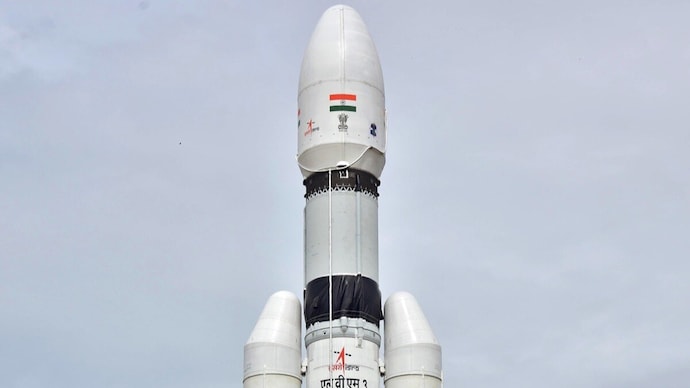
Chandrayaan-3 begins journey to launchpad on India's heaviest rocket, LVM-3
The spacecraft is scheduled to lift off from Sriharikota on a mission to the Moon in the second week of July. Initially, the launch was planned for July 13, according to the official announcement.

In Short
- The spacecraft is scheduled to lift off from Sriharikota
- The spacecraft will embark on a nearly two-month-long journey to the Moon
- It will first be injected into lunar orbit
Chandrayaan-3 has commenced its journey to the launchpad, encapsulated aboard the Launch Vehicle Mark-3 (LVM-3) at the Satish Dhawan Space Centre in Sriharikota.
The spacecraft is scheduled to lift off from Sriharikota on a mission to the Moon in the second week of July. Initially, the launch was planned for July 13, according to the official announcement.
However, Isro has stated that if any unforeseen circumstances arise, the launch may be postponed until July 19.
Earlier, the lunar spacecraft was integrated with the payload fairing and subsequently attached to the rocket for its journey beyond Earth.
Chandrayaan-3 is the third installment of the Chandrayaan series and represents India's second attempt to achieve a soft landing on the Moon's surface. To date, only three countries have successfully landed spacecraft on the airless lunar world.
Also Read | Chandrayaan-3 launch: Why landing on the Moon is a nightmare
Equipped with a lander and a rover, the spacecraft will embark on a nearly two-month-long journey to the Moon. It will first be injected into lunar orbit before initiating the landing approach.
The lander and rover will be transported to the lunar orbit aboard the Propulsion Module, which has been loaded with propellant for the voyage.
Also Read | Chandrayaan-3 launch: Unpacking India's ambitious lunar mission
The Indian space agency has affirmed that the lander possesses the capability to softly land at a designated lunar site and deploy the rover. The rover will then conduct in-situ chemical analysis of the lunar surface during its mobility.
Isro's chief has expressed confidence in the mission's success, citing the introduction of a new system, the resolution of previous glitches, and improvements in the mission's structural integrity.
This ambitious mission follows the Chandrayaan-2 mission, which crash-landed on the Moon's surface four years ago in 2019.
The Chandrayaan-3 mission aims to explore the Southern Polar Region of the Moon and will strive to achieve a soft landing, positioning India as the fourth country in the world to accomplish this remarkable milestone.
Also Read | Chandrayaan-3 launch in July: Here's all that India is sending to the Moon

